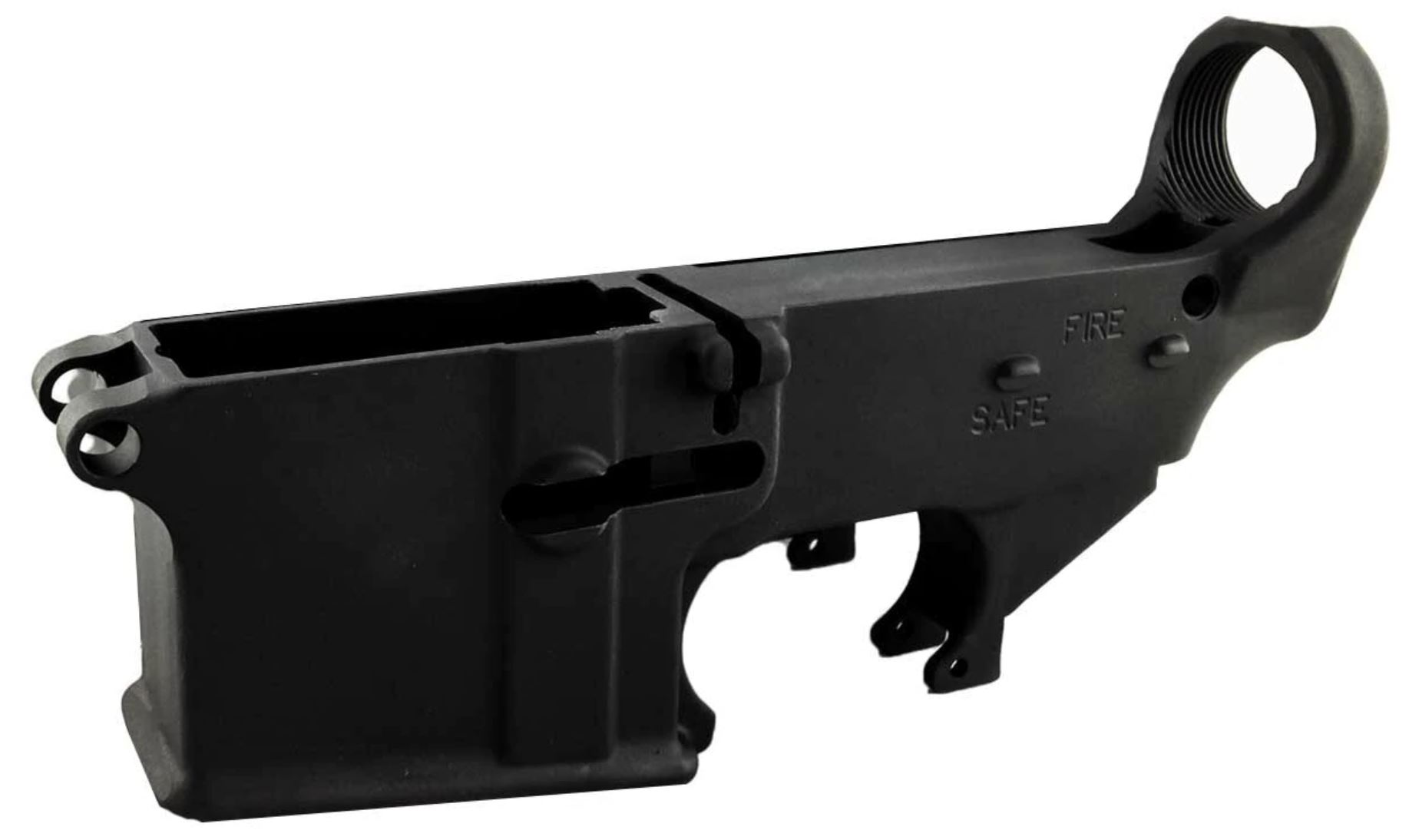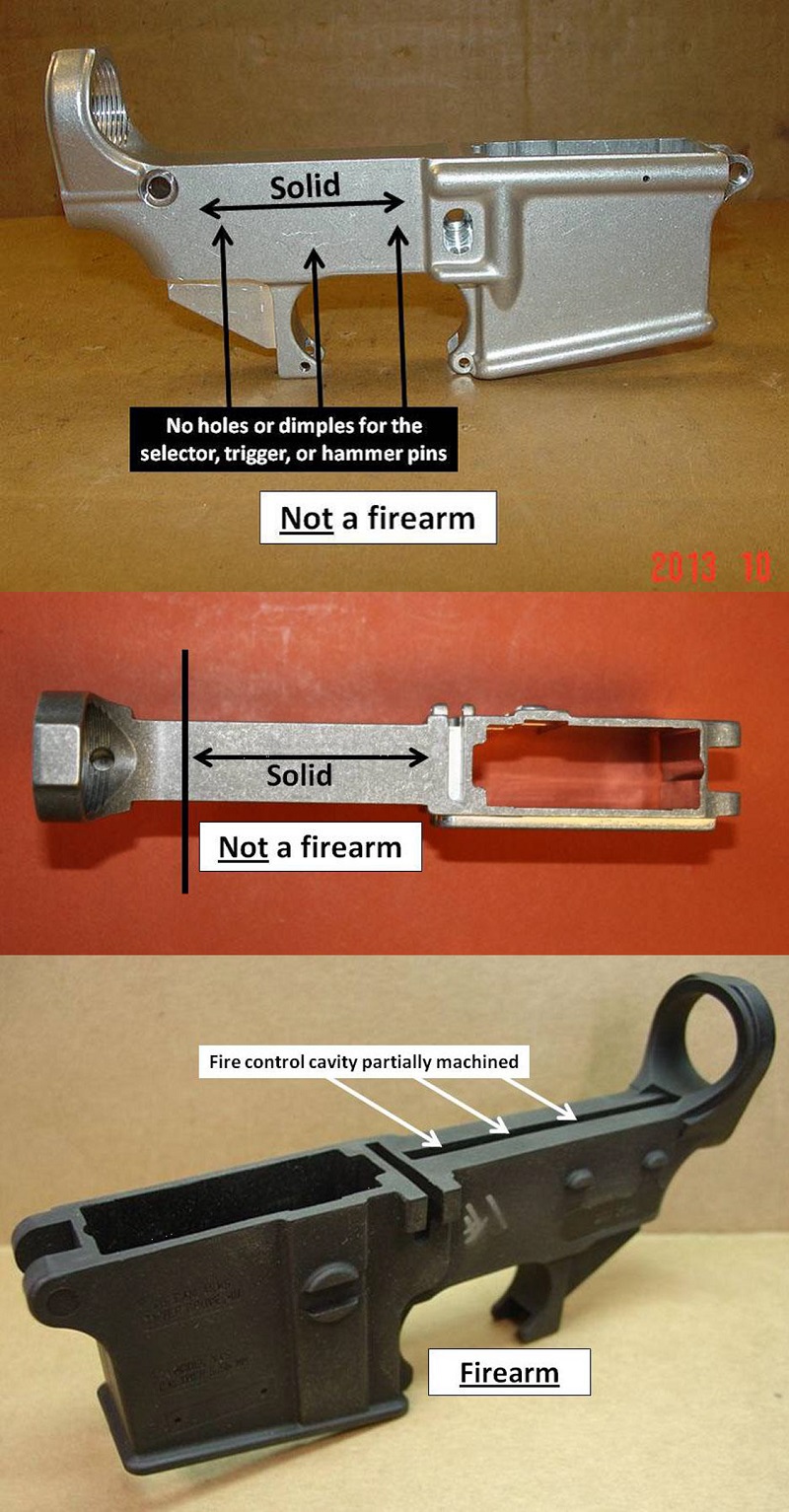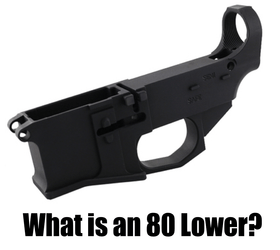What is an 80% lower?
Posted by 80-Lower.com on Sep 6th 2022
When you build an AR-15, you always start with the stripped lower receiver.
Why? Because, legally, it's the regulated firearm component of the entire rifle or pistol. All the other parts you need to build an AR are not regulated, serialized, or controlled by the Bureau of Alcohol, Tobacco, and Firearms (ATF).
But even though the AR's lower is considered the firearm, it can't do anything by itself. It's just an empty housing. It holds the trigger, hammer, safety, disconnector, and magazine. It attaches to the upper receiver -- the part of the AR containing the barrel and bolt -- and the buffer system, which manages the firearm's semi-auto function.
So, if the AR's stripped lower is legally the firearm, then what's an 80% lower?
What's an 80% lower?

An 80% lower is an unfinished stripped lower receiver. It is not a firearm by definition. That's because even if you had all the parts required to make it work, it couldn't be made functional: 80% lowers are not physically machined to accept all the required parts.
The Unfinished Parts of an 80% Lower
So, what parts of an 80 percent lower aren't finished? These are the areas you must complete yourself, through drilling and fabrication, to make it a functional firearm:
- Drill the hammer pinhole
- Drill the trigger pinhole
- Drill the safety selector lever hole
- Machine the fire control group cavity
As the name implies, some areas of the 80% lower are already drilled and machined. Those parts include the:
- Bolt catch
- Pistol grip hole
- Magazine well
- Magazine release
- Buffer detent hole
- Trigger guard pinholes
- Upper receiver rear lug pocket
- Front and rear take-down holes
- Buffer tube threads and housing
Drilling the pin holes and finishing the cavity will make your 80% lower ready for assembly. You can purchase all the parts together in a lower parts kit and buffer tube kit.
The ATF's Take on 80% Lowers
The ATF doesn't officially recognize the term "80% lower." But the agency does legally categorize unfinished lowers as receiver blanks. The ATF says that any receiver blank that doesn't meet the definition of a firearm is, well, just that: Not a firearm. If an 80% lower isn't considered a firearm, then it doesn't need a serial number. A background check and FFL aren't required to buy one, either.
The ATF even provides some photos to clarify what it considers to be a receiver blank (80% lower) and what it considers to be a firearm, when it comes to the AR's lower receiver:

Types of 80% Lowers
The most common type of 80% lower receiver is made for the AR-15, like the forged and anodized lower pictured in this guide, up above. It is an unfinished version of the AR's stripped lower receiver. These lowers work with 5.56 and .223 magazines and uppers, as well as some other calibers, like 300 Blackout and 6.5 Grendel.
Larger .308-type 80% lowers also exist for the AR-10 / LR-308 rifle platform, which can also chamber 6.5 Creedmoor. And lastly, 80% frames exist for certain handgun platforms, like the 1911, Sig P320, and GLOCK.
This guide compares all 80% lowers
This guide compares all 80% frames
Some states have banned 80% lowers
Receiver blanks are not legal in all fifty states. Some states (like California) requires a firearm receiver or frame blank to be serialized before the user fabricates one. California residents must also submit to a background before building. Other states have banned the sale, ownership, fabrication, and use of receiver blanks. Because of changing firearm laws, the below list may not be all-inclusive. These are the localities and states that have restricted or banned receiver blanks:
- California (AB 1621)
- Connecticut (Public Act No. 19-6)
- Delaware (H.B. 125 - 2021)
- District of Columbia (D.C. Law 23-125)
- Hawaii (H.B. No. 1733)
- Illinois (H.B. 4383)
- New Jersey (NJ Rev Stat § 2C:39-9 (2013))
- New York (Senate Bill S14A)
- Rhode Island (Senate Bill 2004)
- Washington (H.B. 1739 - 2019-20)
Frequent Questions
Q: Does an 80% lower need a serial number?
A: Under federal law, no. The ATF recommends a unique serial number be applied to your homemade firearm. That way, it can be traced more easily in the event it is lost or stolen. Some states require serialization of 80% lower receivers and frames, like California.
Q: Do I need to visit an FFL or fill out a Form 4473 to buy an 80% lower?
A: No. Because 80% lowers are classified as receiver blanks, their sale and distribution is not restricted to FFLs. A 4473 isn't required to buy one. This form couldn't be completed for a receiver blank, anyway, since it has no serial number.
Q: Are 80% lowers legal under federal law?
A: Yes. There's a myth that some federal law has made receiver blanks illegal. This is false. Just like how automatic knives are only banned in certain states, so too are 80% lowers -- but this depends on individual states' laws, not federal law.
The Gun Control Act of 1968 specifically allows for the building of an un-serialized firearm at home for personal use, with no FFL or license required.
Q: Are 80% lowers different from factory-made receivers?
A: Once fabricated, an 80% lower is identical in form and function to its platform's corresponding "retail-bought" receiver or frame. This ensures off-the-shelf components can be installed and the firearm can be customized with popular parts.
Q: What else do I need to assemble my receiver blank?
A: Receiver blanks are sold separately from the other parts required to fabricate a firearm. In addition to the lower parts kit and buffer system, you will need the upper components. Here's a complete AR-15 parts guide. It covers all the required parts, and their compatibility, in detail.
DISCLAIMER: If you are new to the world of DIY gun building, you likely have a lot of questions and rightfully so. It’s an area that has a lot of questions that, without the correct answers, could have some serious implications. At GunBuilders.com, we are by no means providing this content on our website to serve as legal advice or legal counsel. We encourage each and every builder to perform their own research around their respective State laws as well as educating themselves on the Federal laws. When performing your own research, please be sure that you are getting your information from a reliable source.



